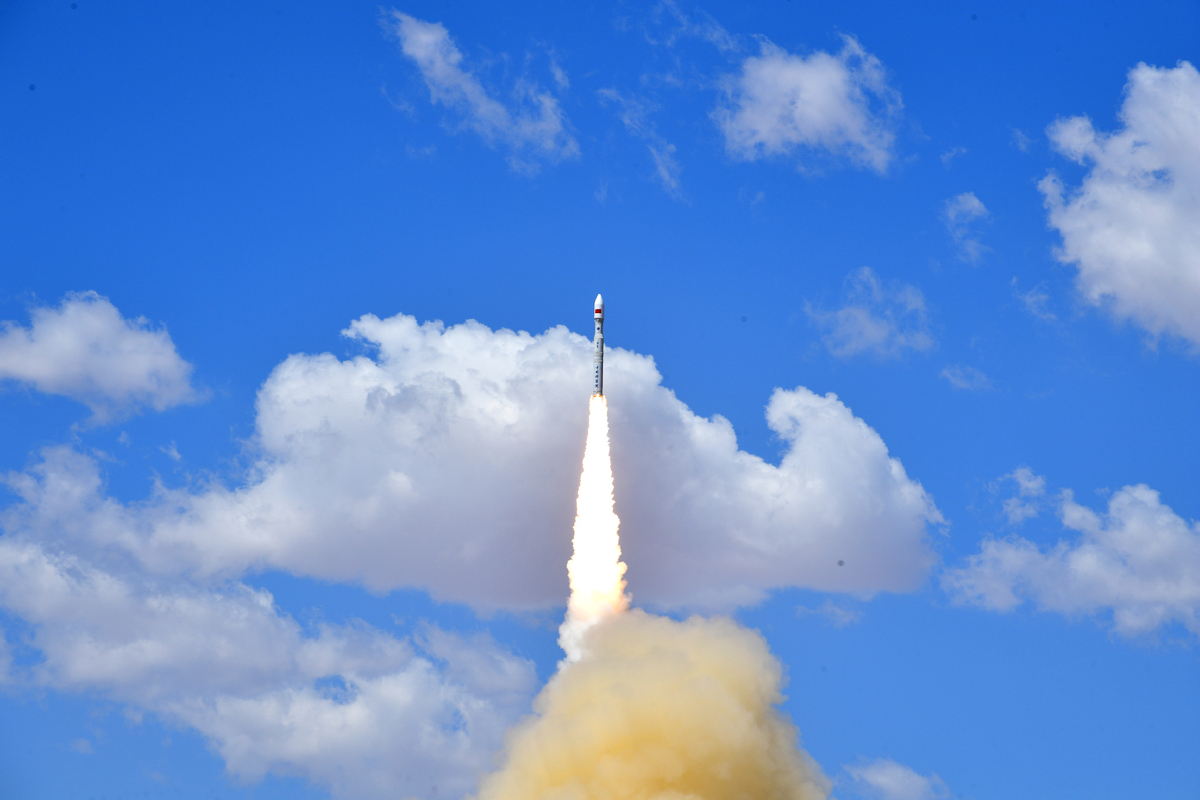New carrier rocket makes debut flight
time:2022-07-28author:母基金source:本站click:639
 The ZK 1A, a new model of carrier rocket, conducts its debut flight at noon at the Jiuquan Satellite Launch Center in Northwestern China on July 27, 2022. [Photo/Xinhua]
The ZK 1A, a new model of carrier rocket, conducts its debut flight at noon at the Jiuquan Satellite Launch Center in Northwestern China on July 27, 2022. [Photo/Xinhua]
Backed by academy, ZK 1A becomes nation's mightiest solid-propellant model
The ZK 1A, a new model of carrier rocket, conducted its debut flight at noon on Wednesday at the Jiuquan Satellite Launch Center in northwestern China, becoming the country's largest and most powerful solid-propellant rocket.
Designed and built by CAS Space, a Beijing-based rocket company owned by the Chinese Academy of Sciences, the rocket blasted off at 12:12 pm and soon placed six satellites into preset orbits, CAS Space said in a news release.
All of the satellites are tasked with carrying out technological demonstrations and scientific experiments, it added.
The ZK 1A has a length of 30 meters, a diameter of 2.65 meters and a liftoff weight of 135 metric tons. It is capable of sending satellites with a combined weight of 1.5 tons to a typical sun-synchronous orbit about 500 kilometers above Earth.
The rocket features a strong carrying capacity, high accuracy, a reliable design, high cost-efficiency, short prelaunch preparations, low requirements on support infrastructure and is one of the best solid-propellant carrier rockets in the world, the company said.
The successful launch made the ZK 1A China's biggest and most powerful solid-fuel rocket, replacing the Long March 11, a product of China Aerospace Science and Technology Corp.
The Long March 11 is 20.8 meters tall, with a diameter of 2 meters and a liftoff weight of 58 tons.
The launch mission marked the ZK series' debut as a new brand of rocket in China, following the Long March of China Aerospace Science and Technology Corp, the Kuaizhou of China Aerospace Science and Industry Corp, the SQX from privately owned i-Space, and CERES from Galactic Energy, another private rocket maker.
It also means that the Chinese Academy of Sciences now has its own carrier rocket for orbital launches. The CAS had previously designed and made a lot of satellites but relied on others' rockets to deploy them.
Yang Yiqiang, a senior rocket scientist and founder of CAS Space, said the ZK 1A is an ideal option for launching small- and medium-sized satellites. It will enrich the service portfolio of the Chinese carrier rocket fleet.
He said that researchers at the company are working on the ZK 2, a new model that is expected to become the world's most powerful solid-propellant rocket.
Designers said that a ZK 2 will consist of a core stage and three side boosters, and all of them will have a diameter of 2.65 meters.
The rocket will be 42 meters tall, have a liftoff weight of 445 tons and be able to transport satellites with a combined weight of 5.6 tons to a 500-kilometer sun-synchronous orbit.
These specifications will make ZK 2 even more powerful than several liquid-propellant models in the country's Long March rocket fleet, according to its designers.

